Halifax, Nova Scotia, Canada, is an interesting city. With a history dating back to 1749, you’d expect a historic core similar to Quebec. However, with the exception of a few historic buildings preserved along the waterfront, much of the city’s downtown is filled with decaying nondescript office buildings and hotels dating back to the glorious 80s and 90s. Add in the current construction boom of million dollar condos along the waterfront, and you’ve got an uncomfortable mix of aging minimalism and the modern luxury condo aesthetic. The hotel we stayed in was stuck in time, and not a good one.
Walk a few blocks uphill from the touristy waterfront district, and you’re transported into any college town with pubs and restaurants trying to be trendy to attract tourists or the college crowd. Speaking of the college crowd, there are six universities in the city, and the bars fill up at night! It is by all rights a party town. On our second night in town we discovered the Split Crow Pub on the same block as our hotel. There was live music and the nightly special was Power Hour. As we squeezed into the bar to order beer, this was the typical display on most tables.

It took some investigation, but we did eventually learn that the Power Hour special is 13 beers for $13. Talk about being transported back to the 80s! It was a scene out of the 18-year-old dive bars in Greeley where pitchers of beer were 25 cents. If there’s any idea that the younger generations are a bunch of teetotalers who don’t know how to have reckless drunken fun like we did when we were irresponsible adolescents, Halifax throws that out the window. Of course, with live music and endless beer, we fit right in and had a great time!
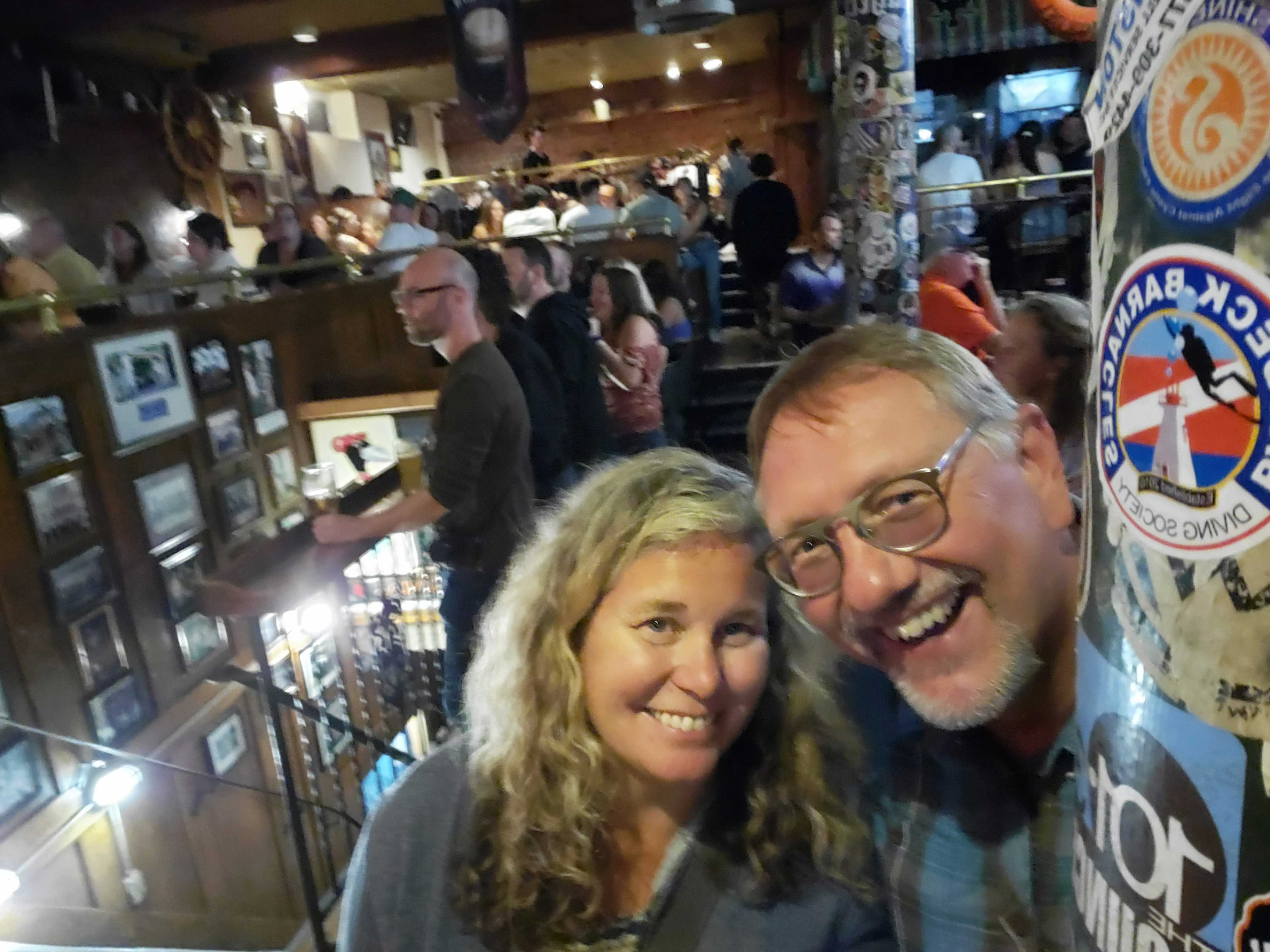
I characterize it as a college party scene, but reality is, it was pretty much all ages. We weren’t completely out of place. In fact, the college kids partying behind us actually had their parents with them (who left early) while they did shots and ordered sets of 13 beers.
Okay, okay. Unfair first impressions. This characterization is a little tongue in cheek, but not entirely hyperbole. Fact is, we really wanted Halifax to be cool and had high expectations. Is it Halifax’s fault it was just another waterfront city trying to make a buck? Did the throngs of tourists turn us off? Was it just the fact that the toilet in our hotel room almost overflowed the first time we used it, the hotel restaurant sold us a moldy smoothie we had to return that first morning, and the hotel lobby smelled like a stale smokey baroom? (It was all we could get. Somebody likes the town because it was fully booked!)
Enough of That
Baggage, baggage, baggage. Had to get that out of the way. The city is packed with throngs of tourists because there’s tons to love about Halifax. It also has a very active conference clientele –convention folks were everywhere (including name tags). The waterfront is vibrant and charming. The university district is full of shops and restaurants and shows little impact of COVID that we’ve seen in other cities during our travels. Halifax is booming and there is construction everywhere. I’m sure there are better hotels. It was time to get away from our disappointing lodging and see what the city really had to offer.
Best thing about our hotel was the location. We were just two blocks from the waterfront. One of the most impressive civic restoration projects is the Historic Properties. These are a series of old waterfront warehouse buildings that have been redesigned, refurbished, and repurposed. They serve as the core of the tourist district and are a fine example of what a city can do when it bothers. Kudos to Halifax.

Halifax wants you to feel welcome and comfortable, and it shows everywhere. The Adirondack chairs you see around the Historic Properties aren’t just the kindness of a few savvy business owners trying to attract shoppers, they’re a deliberate act of public comfort that goes beyond anything we’ve ever seen a city do. They are everywhere! Halifax’s waterfront is actually 2.5 MILES of public accessible boardwalk covered with Adirondack chairs, picnic tables, and in some cases even hammocks. On several occasions we found ourselves simply lounging and watching the boats go by.
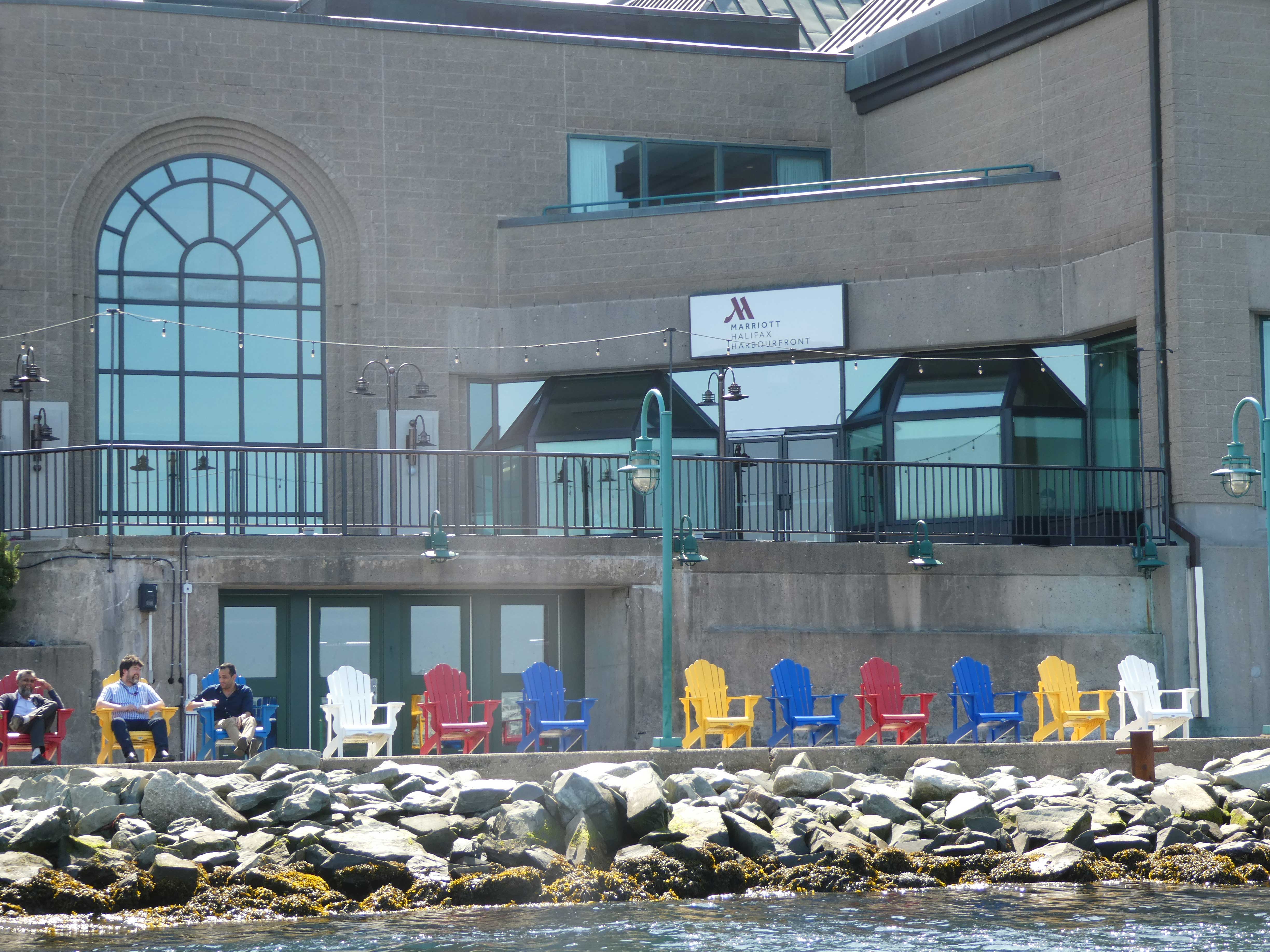
The chairs definitely add a splash of color to the front of the nondescript concrete Marriott in the background. As I said, we frequented them during our five days in town. This batch was just near enough to the casino that most tourists didn’t actually come down this far.

Speaking of watching boats, the Halifax harbour had many many for us to watch. One of the most interesting and fun were the ferries that regularly carried tourists and locals across the water to Dartmouth. Fare for the ferry is same for the bus. It will cost you a Toonie. You’ll just have to look that one up.
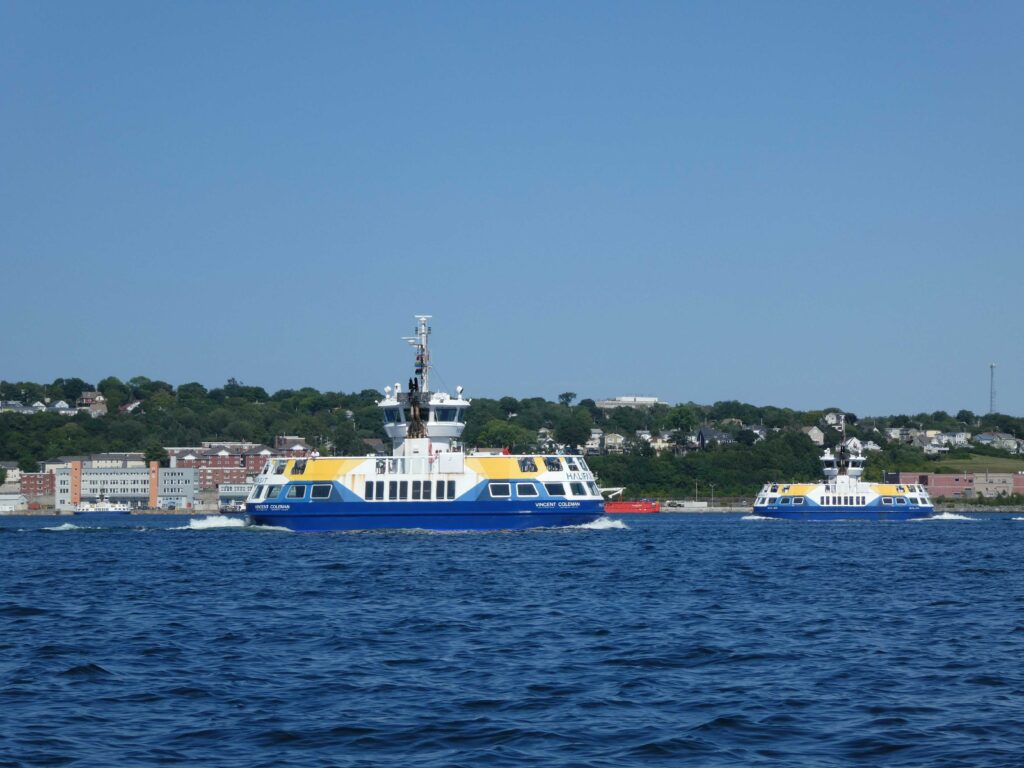
These nimble boats were fast and could turn on a dime. On one of the runs, the ferry would leave the dock and then do a spin before heading off across the harbor. Really made you want to cruise around in one. Well, actually, we did! It was a quick ride across the water to two breweries near the terminal in Dartmouth were there was also a Jamaica Independence Day concert going on. We sat on the patio of New Scotland brewing listening to Reggae music and then enjoyed the ride back. You can see the Halifax waterfront behind us.

Another frequent sight on the water, and frankly everywhere we went in Halifax, was the Harbour Hopper, and amphibious vehicle that carted tourists around town and down the waterfront. They were so frequent, I think we saw 4 different boats in the span of an hour.

It, of course, was a big noisy diesel-powered monster, so we opted not to take a ride. For a more peaceful cruise down the waterfront, we took the electric-powered Halifax Harbour Tours boat. It was slow and not much of a “tour”, but we enjoyed our time on the water. The owner actually refurbished an old, but not historic, boat to make it have the wooden historic feel. It was nicely done.

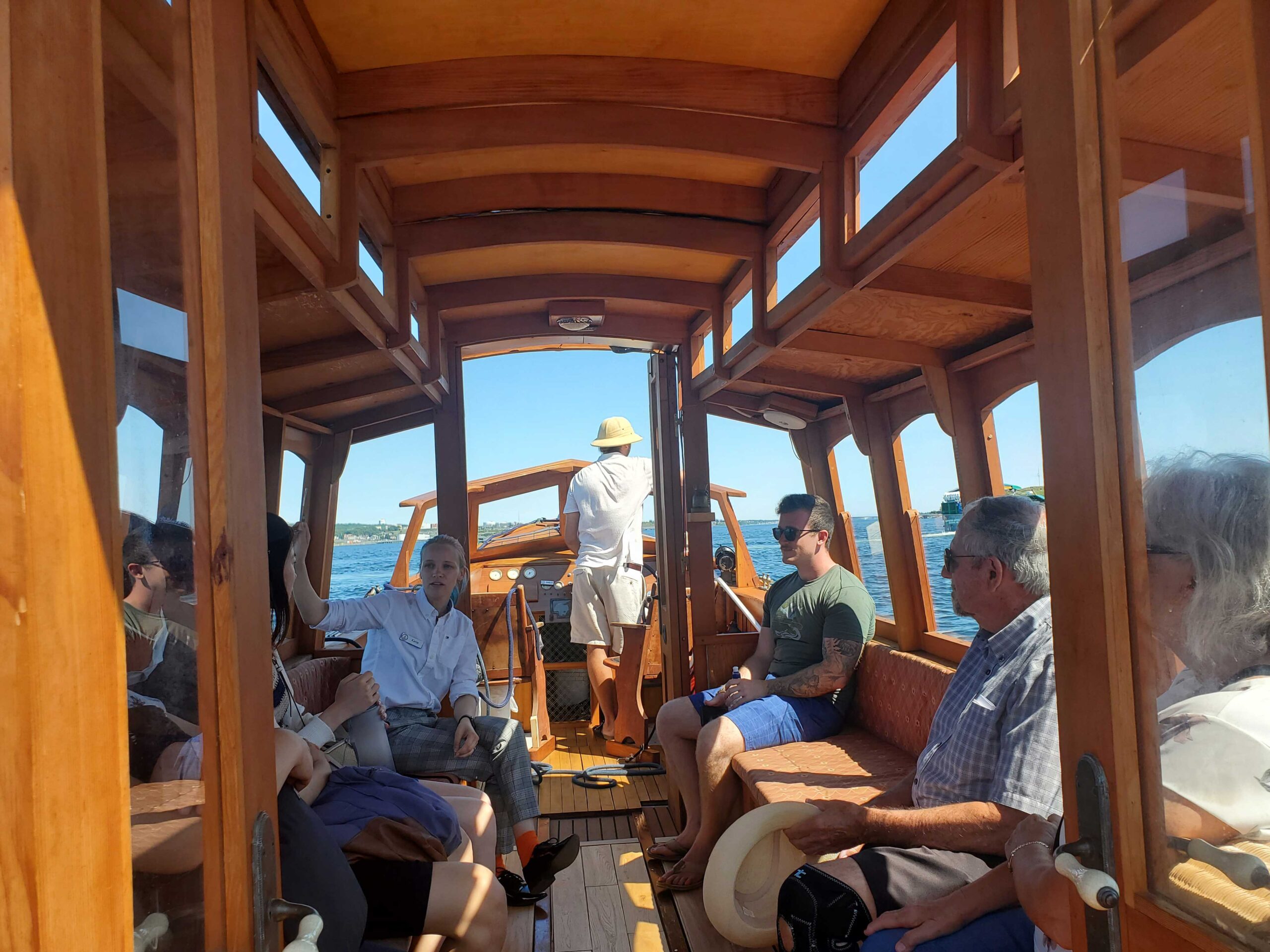
Maritime History of Halifax
Halifax’s history is its maritime history, much of which is preserved and on display on the boardwalk. Two historic naval vessels have a permanent home at the docks and serve as living museums. One is the CSS Acadia, a hydrographic survey ship responsible for charting almost every part of the Eastern Canada coast over five decades. We admired it from afar because it is only open for a couple days midweek for some reason. It was still very cool and some of its history is also preserved in the adjacent Maritime Museum. The other ship, the HMCS Sackville, although of similar size was a vessel of war, not science. This corvette-class ship was responsible for protecting the Canadian provinces from German U-boats, and has an impressive history of success. It was also just really fun to tour.

The inside of the Maritime Museum of the Atlantic is just as impressive as the ships outside. Halifax is unique this far north in that its deepwater port never freezes and has been active year round dating back to the earliest settlements. It is also unique in the fact that it has never been the sight of a major battle. Unlike Quebec, which had control bouncing back and forth between the French and the British, Halifax was consistently under British rule and economically stable.
This open-port culture sometimes led to extremes in sea traffic and congestion, and yes, eventually to great disaster. Instead of simply burning to the ground like cities such as Chicago, Halifax actually managed to blow itself up! The Great Halifax Explosion is one of the museum’s feature exhibits, and contains rooms full of artifacts and stories recounting the event. In December of 1917, a French munitions ship overloaded with explosives collided with Norwegian vessel. The resulting explosion created a blast that was unequalled in the Twentieth Century up until the United States dropped a nuclear bomb on Hiroshima. More that 1,700 people were killed and more than 9,000 injured. Some ship fragments were thrown more than 5 kilometers away, and the entire waterfront was reduced to rubble. It is amazing and I can’t do it justice. Just go read about it.
Following the theme of disasters, Halifax also played a role in one of most famous shipping disasters, the sinking of the Titanic. Halifax was the nearest port to the disaster, received the first telegraph reports of the collision with the iceberg, and was the first to dispatch rescue ships. Another entire exhibit is dedicated to the sinking of the Titanic. The Maritime Museum contains tons of extremely intricate and impressive models of ships. Where the Titanic is concerned, they took an interesting focus on their model building. The one I’m sharing now if one of the first ships tasked with recovering bodies from the water, and the model builder spared no detail.

Other ship models in the museum are much less gruesome and much much larger. Here’s a typical area in the museum where models of historic ocean liners are displayed.
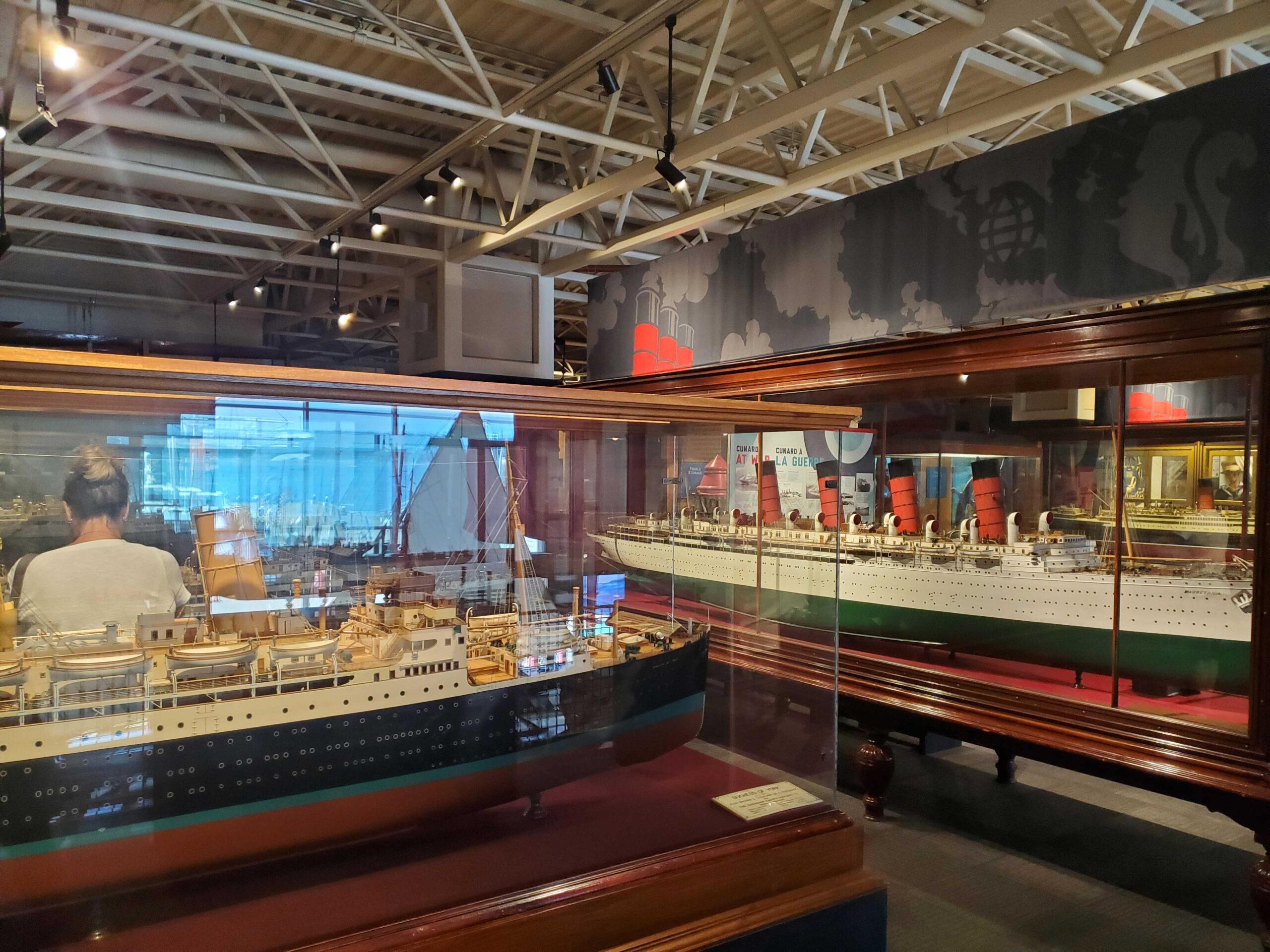
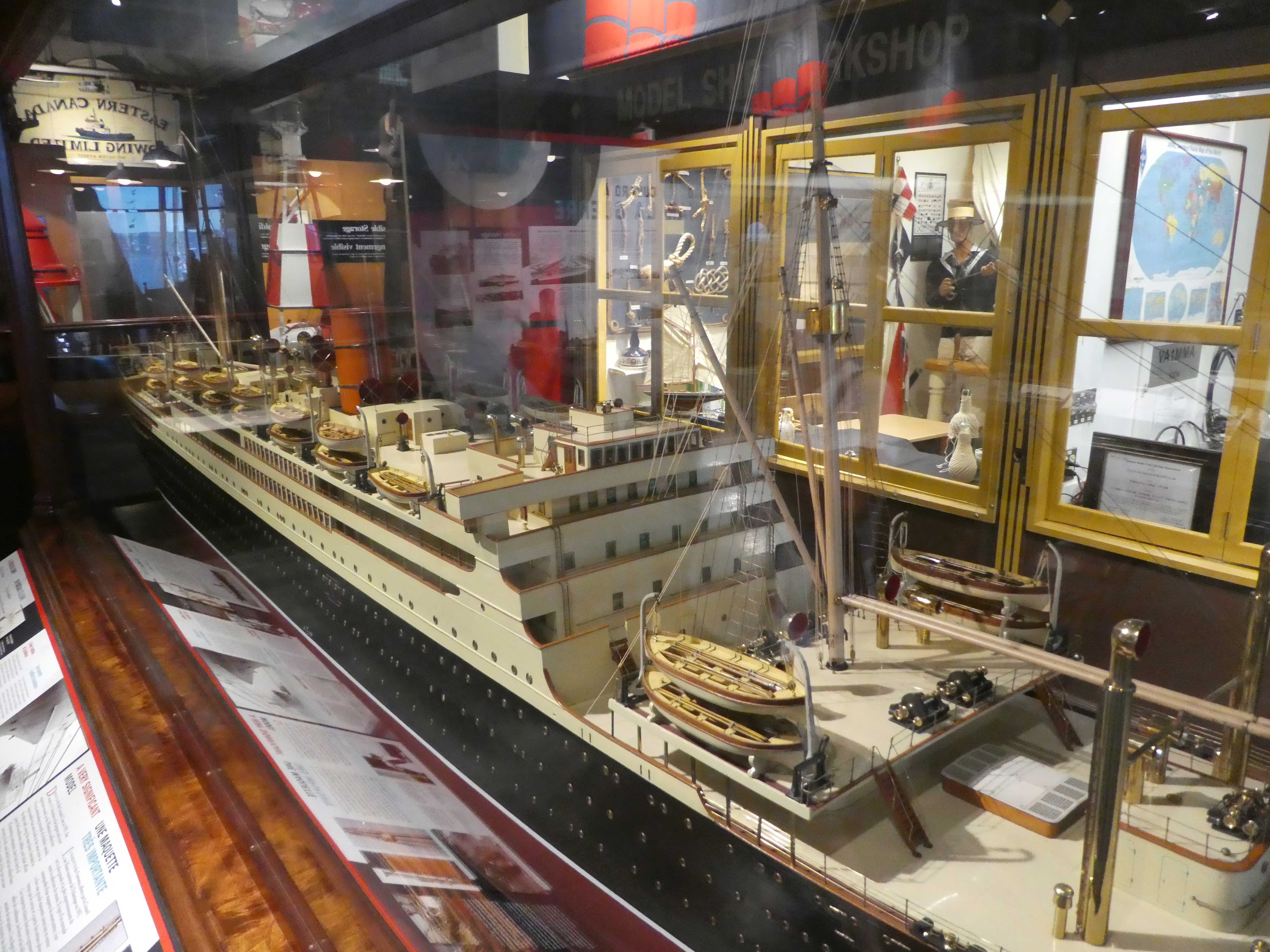
So, the ship models and history of Halifax as a sea port are fascinating. Halifax was starting to get its cool back. And, Halifax had another ace up its sleeve to win back our favor–Beer!
Alexander Keith Brewery
Another historic feature on the Halifax waterfront is one of North America’s oldest continually operating breweries, Alexander Keith. The “Great Man”, as the tour guides termed it over and over again, traveled in the early 1800s from Scotland where he learned brewing from his uncle, to Nova Scotia and discovered a ready market underserved by a barely functional brewery. In 1820, he opened his own brewery with a signature IPA recipe that made him a rich man and prominent community figure. He was mayor and provincial minister many times over. The original brewery has been converted to a mall, but parts are preserved and still functioning. The tour was more entertainment than information, but we had a great time. The front of the brewery where horse carts came to get loaded with kegs is pretty much as it was when the brewery opened (except for the gift shop and the roof).

Keith’s signature beer is an IPA. If you try it expecting an IPA by today’s standards, you’ll be disappointed. Keep in mind that the 26 IBU IPA was meant to be an easily preserved and shippable beer that appealed to the masses. Its broad appeal is one of the reasons it has been in production for over 200 years, and it is way better than a Budweiser. It is still the most common beer on tap throughout Nova Scotia.
The tour led us through the current brewhouse now producing seasonal beers mostly available locally. We enjoyed a great coffee stout produced in these kettles.

The area outside the brewhouse is intended to present a historic facade and project a feel of what it was like in the early days of the brewery.
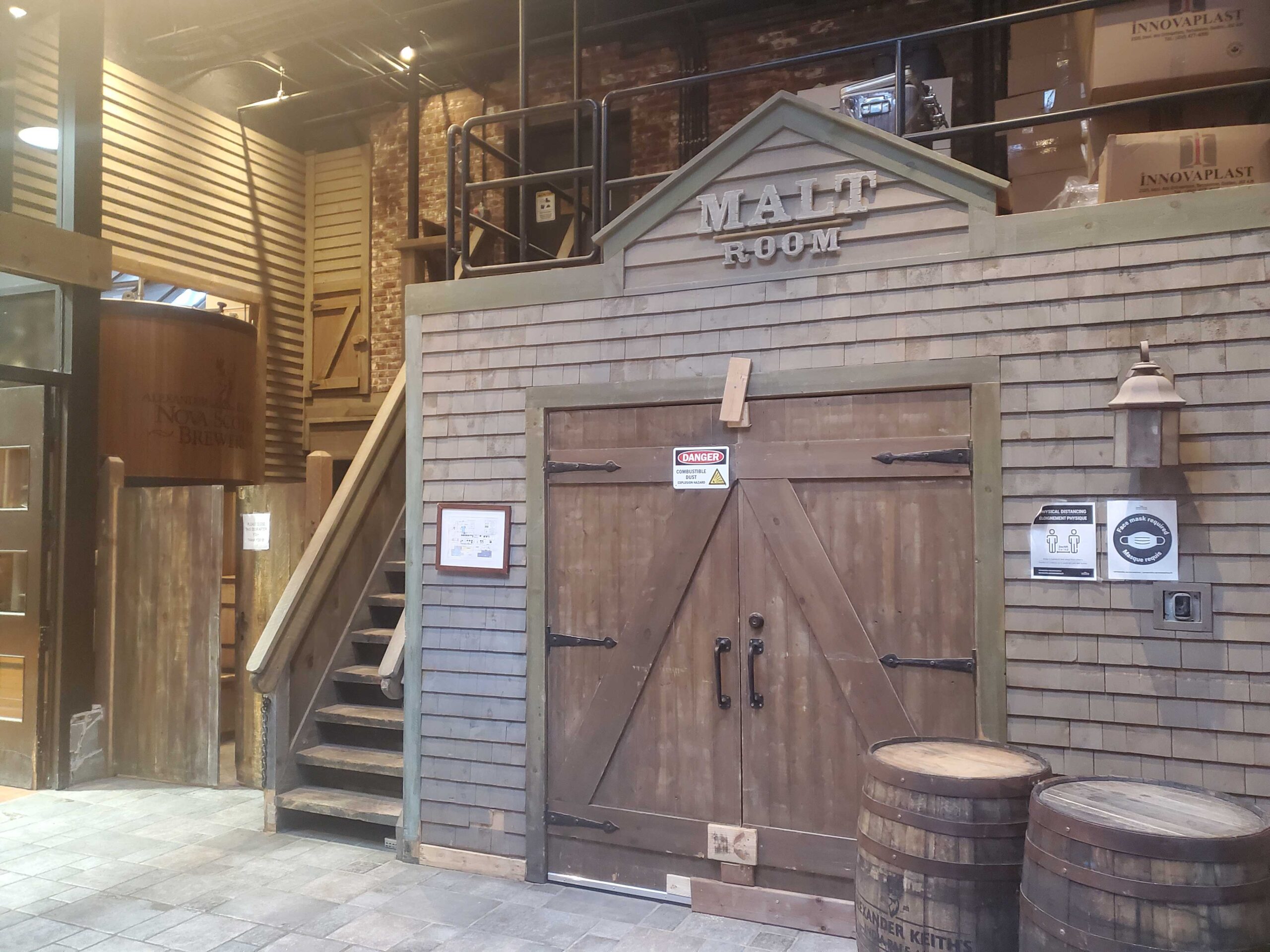
The finale of the tour led us down to the historic storage rooms now converted into a tavern where they entertain guests with a traditional Scottish cèilidh and stories of the brewery’s history. As we exited our tour after enjoying music and several beer samples, we left the way the original kegs of beer left. They rolled us down the tunnel on a ramp and out into the street.
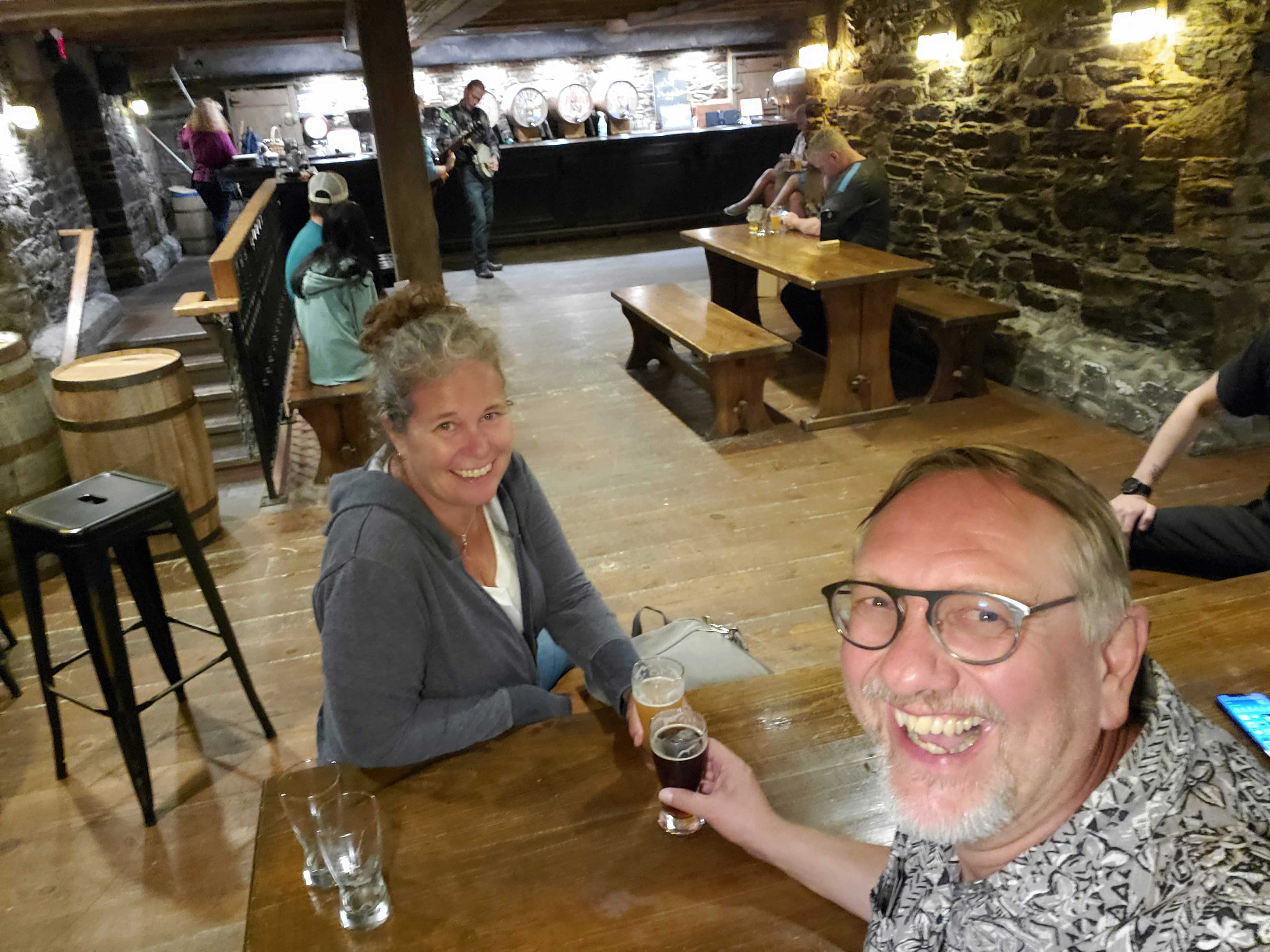
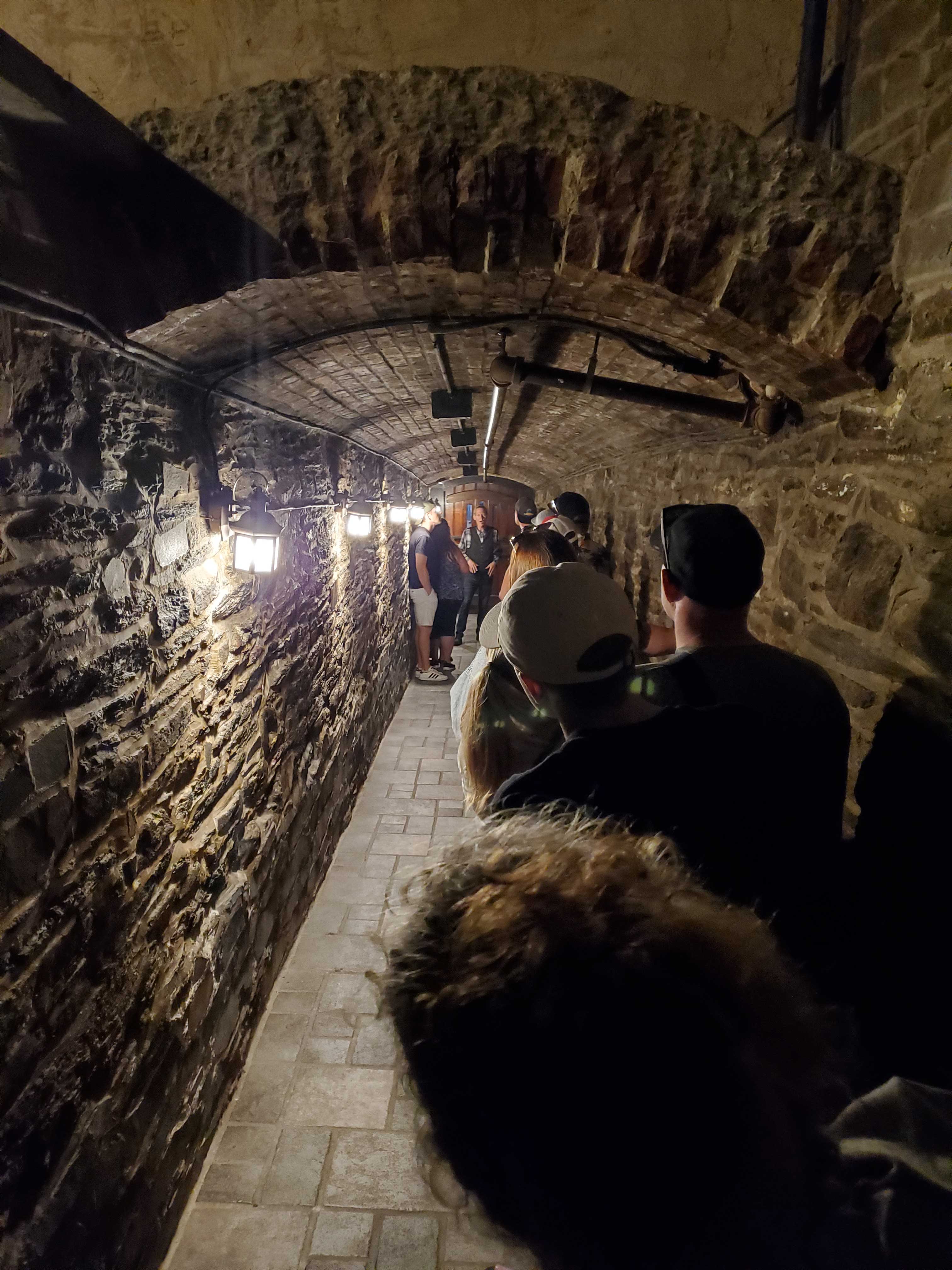
And Then There Were Guns!
Of course, every seaport town’s history is a military one, and Halifax is no exception. Halifax does have one unique fact to its military history others can’t claim. It was never engaged in a major battle or attacked. They are so proud of this fact that Haligonians will boast that it is because the harbour defenses are so impenetrable nobody ever dared try attacking the city. Well, with the citadel and impenetrable defenses just up the hill from our hotel, we had to go find out for ourselves.
The path to the Halifax Citadel National Historic Site from our hotel took us right past the Scotiabank Centre, home to the Halifax Mooseheads. Turns out there was a huge banner of one of their most famous native sons–Nathan Mackinnon!! He’s a native and played his junior hockey as a Moosehead. Unfortunately, there wasn’t a team store or any way to score a Mackinnon Moosehead jersey, or you’d be looking at a picture of me wearing it instead of the banner.

Okay, quick hockey diversion. We were actually talking about guns, and BIG ones. Halifax loves its cannons so much that they actually shoot one off in the historic manner every day at noon. All one has to do to see a real live cannon from the 1800s packed and fired is hike up Citadel Hill to the fortress. How could we resist?
Here’s a view of some of the stairs you have to traverse to get to the fortress. It isn’t a small hill, and it was quite a few stairs. How do you know when to shoot off the cannon each day? Well, build a huge ass clock. This one should do.

One of the reasons the Citadel is so impenetrable is the service of the intrepid guards at the entrance. Of course, they let in tourists, dogs, and even host weddings.

Visitors to the Citadel can walk all along the tops of the walls and enjoy great views of the city and the Citadel itself.
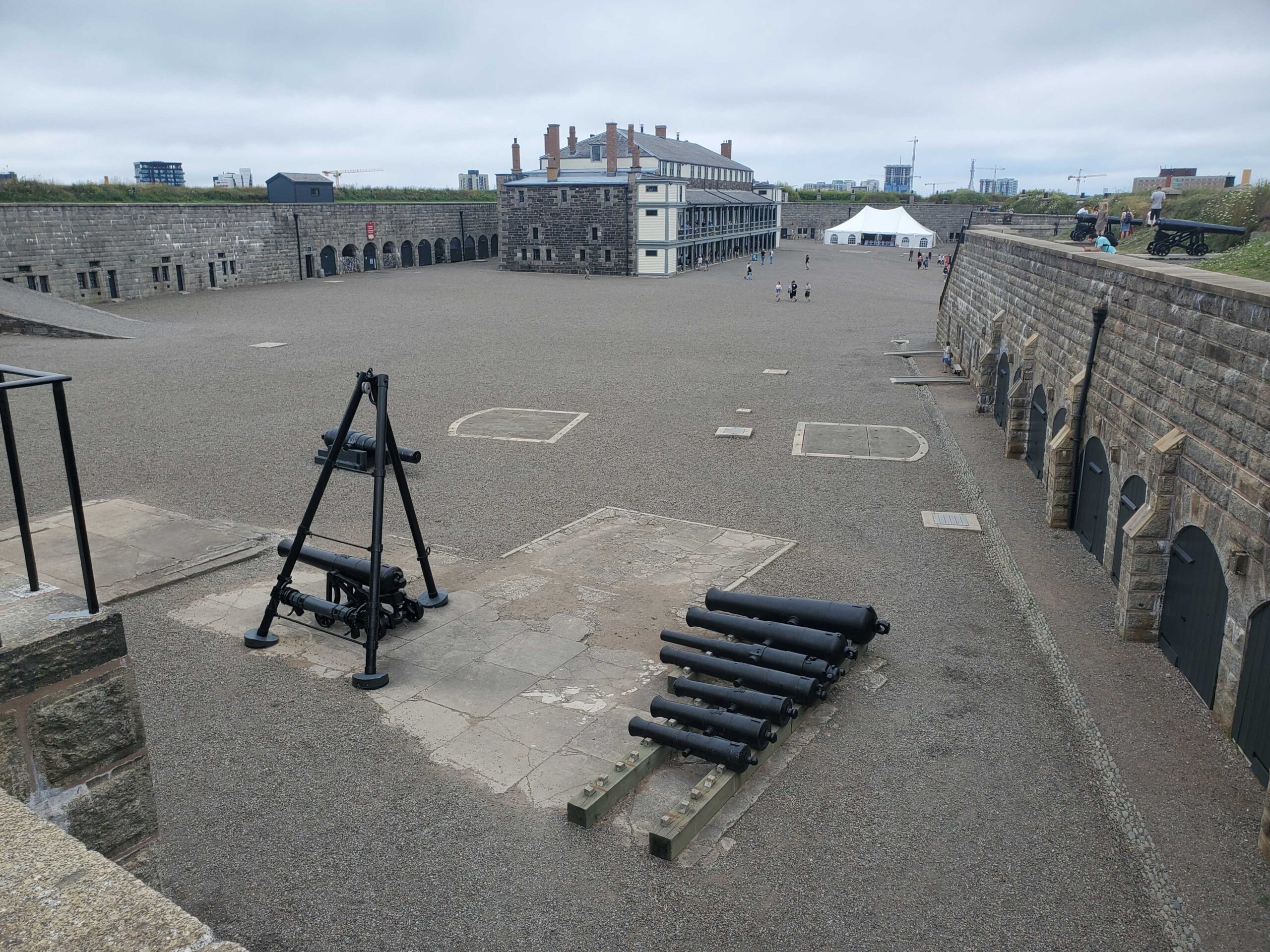
There’s the cannons. In fact, you couldn’t walk 10 feet without encountering a cannon of some kind or another. These huge ones were mounted on rails with wheels so they could quickly target enemy vessels if one should wander into the harbour.

So, the main feature was a bunch of cannons and the main event of the day was to actually watch them shoot one off at noon. The walls around the Citadel filled with tourists at about 11:30. Nobody wanted to miss the big boom. Well, I almost did because even though I knew it was coming, it scared me to death. Note to self, when taking a video of a cannon being fired, set the camera on the wall instead of trying to hold it steady. Enjoy.
A Lovely Oasis
Okay, so there was lots to like about Halifax. We actually had a very good time and eventually overcame the difficulties we encountered on our first day. Just so you don’t get the impression that Halifax is all parties, disasters, and big guns, we’ll end this post with pictures of flowers. The Halifax Public Gardens are an impressive oasis in the middle of the city. We enjoyed a leisurely stroll around the gardens after visiting the Citadel and having some really excellent Thai food.
There’s not much to narrate about the garden pictures, so please just enjoy the beauty that Halifax has to offer and visit if you can. It is a really cool city. Equipped with a rental car and a cooler full of beer and food, we’re off on a road trip to explore more of the Maritime provinces. Those posts are coming up.


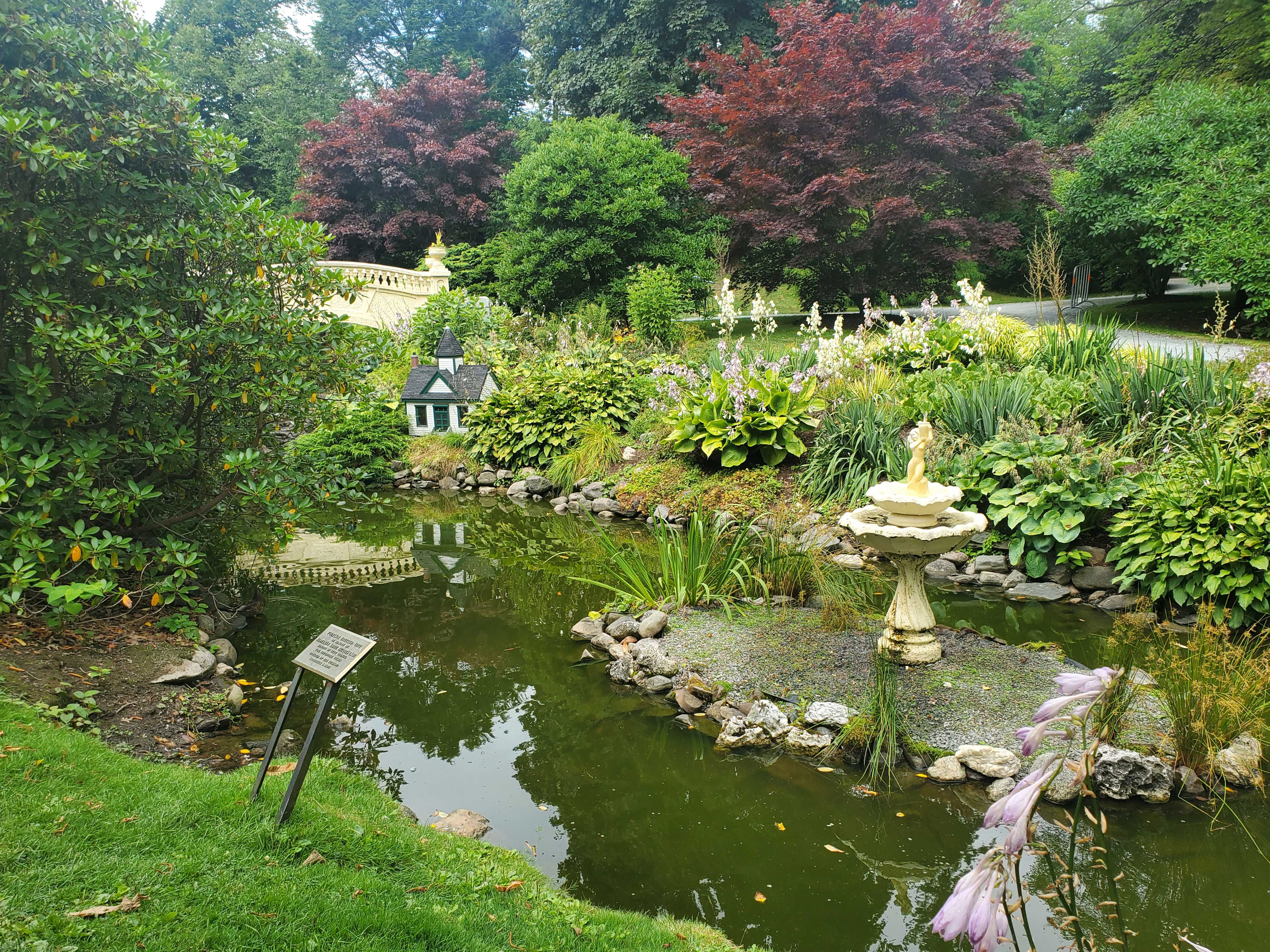
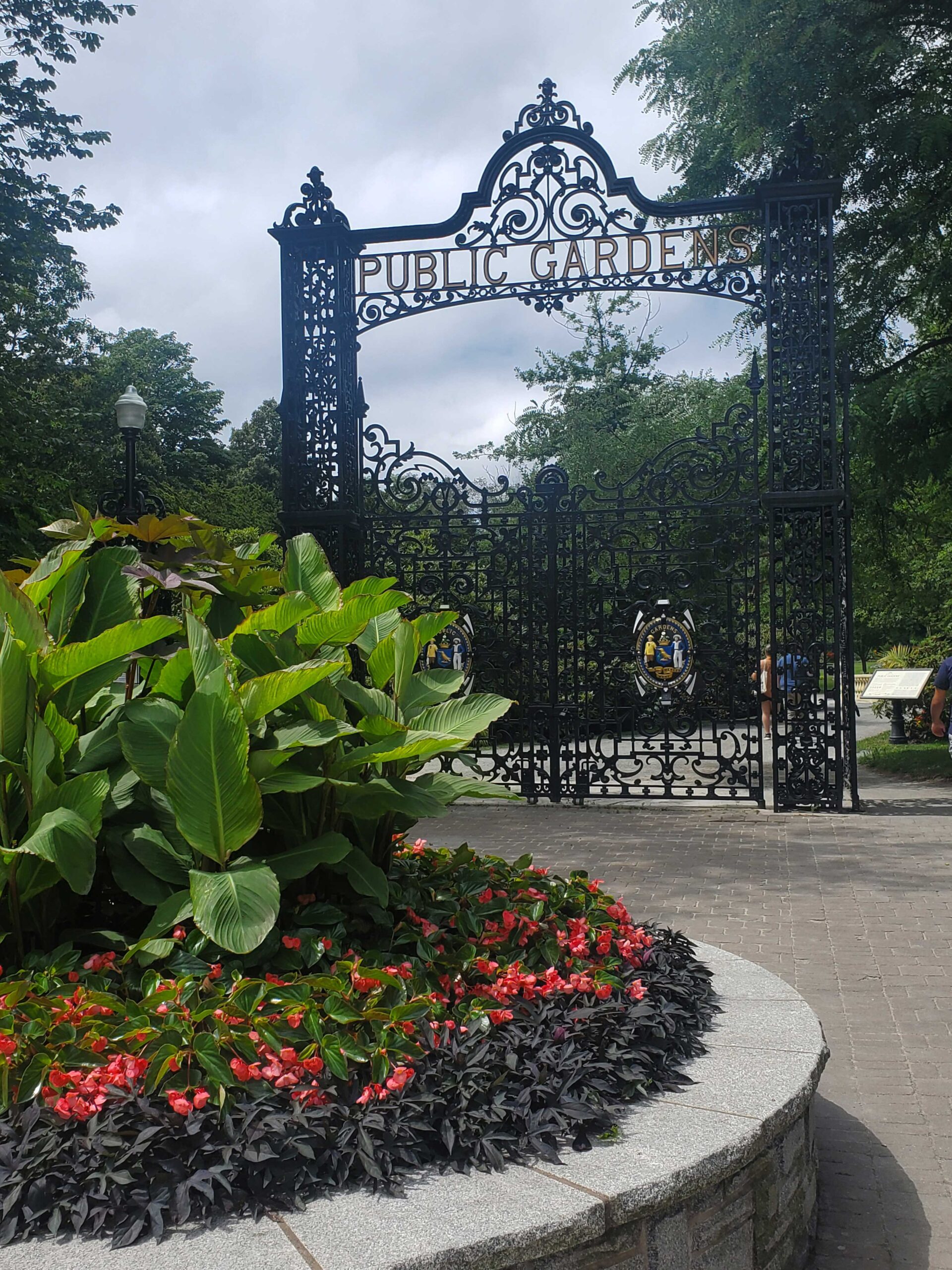
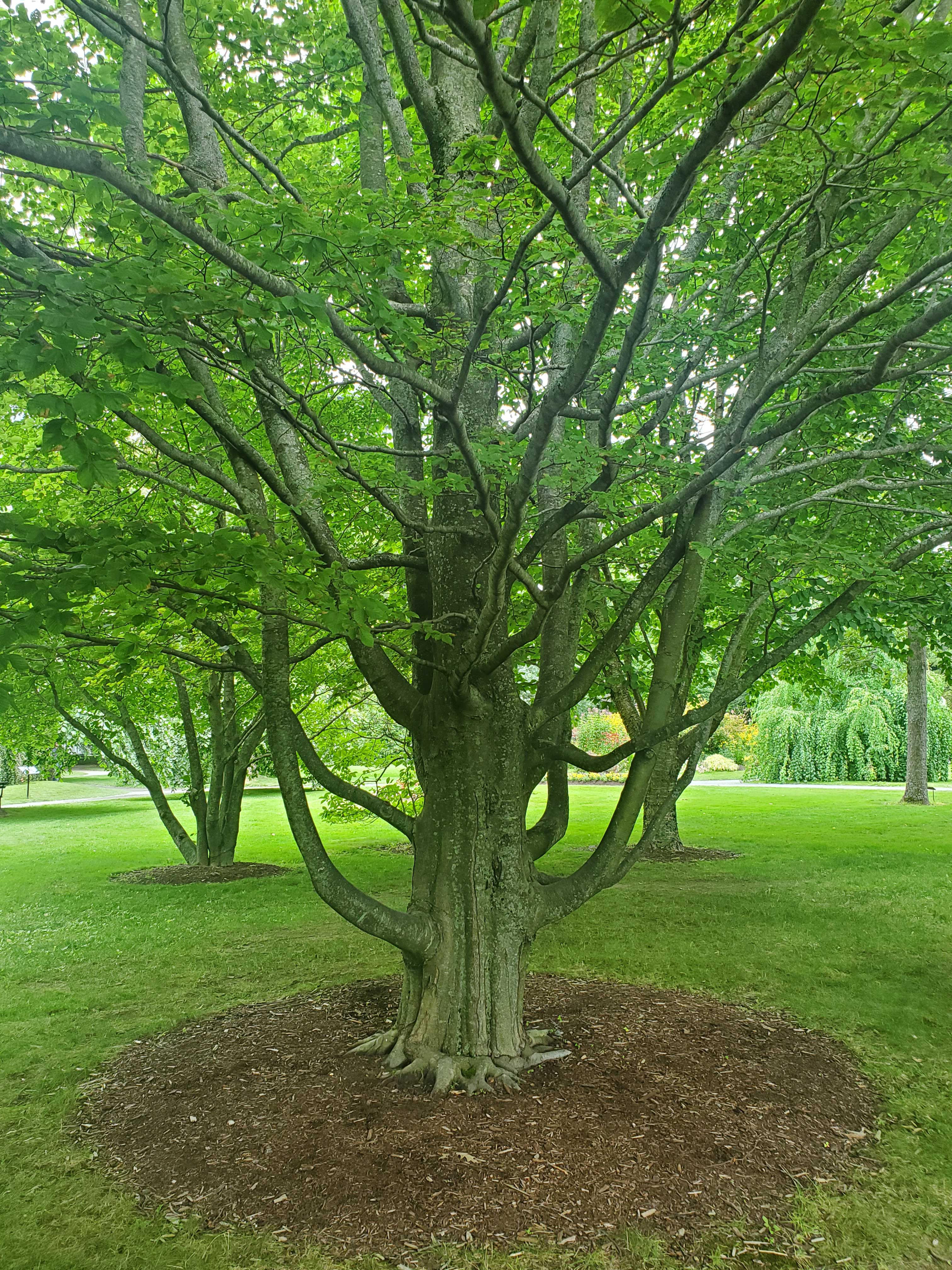


13 beers for $13 – sounds like college days for sure! Glad your first impression of Halifax was not the one you left with and cannons are loud!